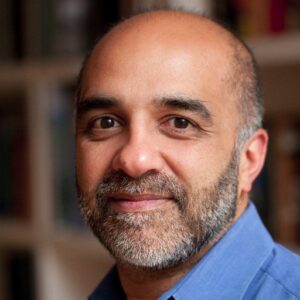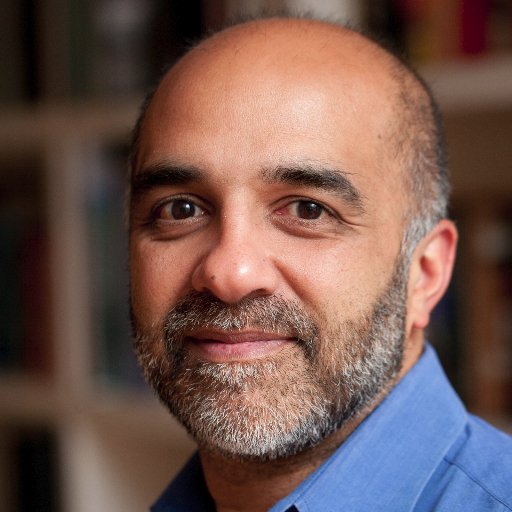The COVID-19 pandemic exposed a number of vulnerabilities within the health care system. One of the most consequential gaps has been a siloed public health infrastructure, where data between health systems and public health departments have rarely flowed effectively. It’s been one of main impediments in stopping the pandemic.
For that reason, President Biden signed into law an executive order asking the secretary of HHS to review the interoperability of systems that support the detection of and response to high-consequence public health threats. From that order, the Office of the National Coordinator for Health IT (ONC) has created the Public Health Data Systems (PHDS) Task Force 2021, to inform HHS’s response to Biden’s executive order.
The PHDS was formally introduced during a meeting of the Office of the National Coordinator for Health IT Advisory Committee (HITAC) last week. The task force will meet at least 11 times during the next two months before voting on formal recommendations to give to the President. The goal is to “identify and prioritize policy and technical gaps associated with the effectiveness, interoperability, and connectivity of information systems relevant to public health.” This means a sharp focus on “surveillance systems, infrastructure improvements, health equity, clinical engagement, research and innovation, educating and empowering individuals.”
Helping launch this task force to revamp the public health data infrastructure is just one of the many duties new Health IT Coordinator Micky Tripathi has undertaken since January. He is also focused on implementation of the 21st Century CURES Act and its main components, the information blocking rule, EHR certification requirements and the establishment of the Trusted Exchange Framework and Common Agreement.
Health Evolution recently spoke with Tripathi about those initiatives, advancing interoperability, building a public health infrastructure and more.
How can health care CEOs for payers and providers lead the industry toward a more interoperable health data infrastructure?
Tripathi: To act in the ways that you want others to act. That sounds very ‘Pollyanna’ but it’s true. Over the last 20 years of my career, the vast majority of which up until January 20, 2021 was in the private sector, I’ve been in lots of conversations with organizations who weren’t able to make progress because other organizations weren’t sharing or making data easily available. When I usually ask, are you making sure discharge summaries get to the primary care provider of the patients you are seeing? Are you sharing your data with other organizations? The response is usually mixed. The first part to this is modeling that behavior and making sure your own house is in order. That’s the way this starts organically.
The second part is thinking about where all of this is headed with regard to apps, restful APIs and the opportunity to work more closely with patients on different models of care and wellness. It’s about being able to use those technologies as well as regulations to create an open ecosystem that has better types of information sharing. That’s what the information blocking regulation is about. There is now an obligation to share information with other authorized parties. And the corresponding piece is the technical requirements, which says the vendors are required to make available certain mechanisms for better interoperability. Making sure vendors, the health information networks and providers are keeping themselves accountable and calling on each of the other parties to do what we need to do as an industry.
How do we balance government intervention/regulation on interoperability vs. having private organizations push it along themselves?
Tripathi: Even though I’m a Democrat, I was always very concerned about where that balance would be struck and areas where regulation could stifle innovation. Or areas where regulation is prematurely directed in certain ways when we know technology is very dynamic, as are the underlying business models. You have the industry moving to value-based purchasing and technology changing at the same time, there is a danger of regulation getting out too far ahead of that and stifling innovation. We spend a lot of time, I personally spend a lot of time thinking about, what is that balance? How do we do what we can to have regulation that ensures a fair playing field so you have maximum participation of private sector innovators that have a fair shot of innovating across a dynamic and exciting space? That’s important to all of us.
The fragmentation of the industry is one of the challenges that makes health care different. Health care has extreme fragmentation on the supply and demand side. Things we see in other industries, where the industry was able to self-organize with interoperability networks and conventions around standards, you don’t see them coming from industry as much in health care. Not because the participants are stupid or don’t want to, but because it’s so fragmented. That collective action is a challenge. It’s hard to get six or seven companies together in health care to say, ‘Let’s agree on this open industry approach and the rest will follow.’ In health care it’s ‘How do I get 50 players together across the country?’ That’s where health care regulation does play more of a positive role than in other industries. It can help with that lowest common denominator. Lastly, unlike in other industries, the federal government is a huge market player when you think about Medicare and Medicaid, the VA and Department of Defense, the Indian Health Service. The federal government has a huge role in health care and health care IT, and I think that can be a real force for forward progress. But we always have to be cautious about not jumping too forward because we don’t want to stifle innovation.

“Things we see in other industries, where the industry was able to self-organize with interoperability networks and conventions around standards, you don’t see them coming from industry as much in health care. Not because the participants are stupid or don’t want to, but because it’s so fragmented.” Photo credit: Micky Tripathi
How can we improve the public health infrastructure so the next time we have a pandemic there is a better response from the industry from a data sharing perspective?
Tripathi: There will be details to work out, but at a high level how do we reconceive the way we think about a public health data infrastructure to be more of an ecosystem? It shouldn’t be an ecosystem that’s divided between public health entities and providers. It shouldn’t be divided into public vs. private data or static vs. dynamic data integration. That’s a little bit how it’s divided now and how our public health data systems have been constructed overall. The public health infrastructure is very siloed. It’s a one-way reporting approach. This goes back decades. We need to think at a high level of how public health infrastructure can be an ecosystem of health care interoperability that lots of different parties are contributing to. We need to think about things that have traditionally been considered health care data vs. things that are now health care relevant that we didn’t think about before. For instance, we’re thinking more about wastewater data and how that’s being used to track COVID in different communities. Think about all the social media data and other kinds of data that under the appropriate privacy protections—it’s not about laying bare people’s privacy but asking how does all that come into play when you think about the ways in which we can get data to act on behalf of the public at large. There are lots of implementation details to work out. But as we’ve been thinking about with the work we’re doing with the [Biden executive order], it’s about saying “if we set that as an overall goal, what does that mean for investments and how we frame it?”
What kinds of ways are you and the ONC promoting telehealth after seeing more usage than ever in 2020?
Tripathi: In some ways, there’s no turning back as people realize there’s a certain amount of value there. When we think about telehealth, you think about the video visit. You and me sitting on opposite ends of a Zoom call. There’s a whole world beyond that, which is about remote diagnostics and digital therapeutics. How can I track your health in your home, besides just looking at you on a monitor? These [technologies] allow me to do different types of diagnostics in real time, so I can get that information as a clinician. How is that integrated with multiple data streams and the EHR? What are the tech standards? There are those questions that would make telehealth a full spectrum capability. All of that derives from, ‘How is this technology going to be paid for?’ There are a lot of open questions. ONC obviously doesn’t play the lead role here. We step in once the business model is established, this is going to be paid for on an ongoing basis and under certain terms, we need to understand the systems that will need to be approved or deemed appropriate.
But it’s huge. If this has taught us nothing else, it’s a) there is a big market for it and a big demand and b) it’s very focused and segmented. We can’t assume everyone wants it. There are certain specialties where it could change things. My wife is a clinical social worker. She wouldn’t have had this job with the local mental health center, except for the fact that everything moved to remote because they had a physical limitation on the number of people that could fit into their building. Once this hit, they went fully remote and hired a whole bunch of clinical social workers. They expanded their capacity. Also, they recently did a poll of patients, asking them how many want to go back to in-person once that opportunity presents itself. Only one of her patients said they wanted to go back to in-person. It may be different for an internal medicine practice, but it will be very segmented and there are a lot of opportunities in different areas.










